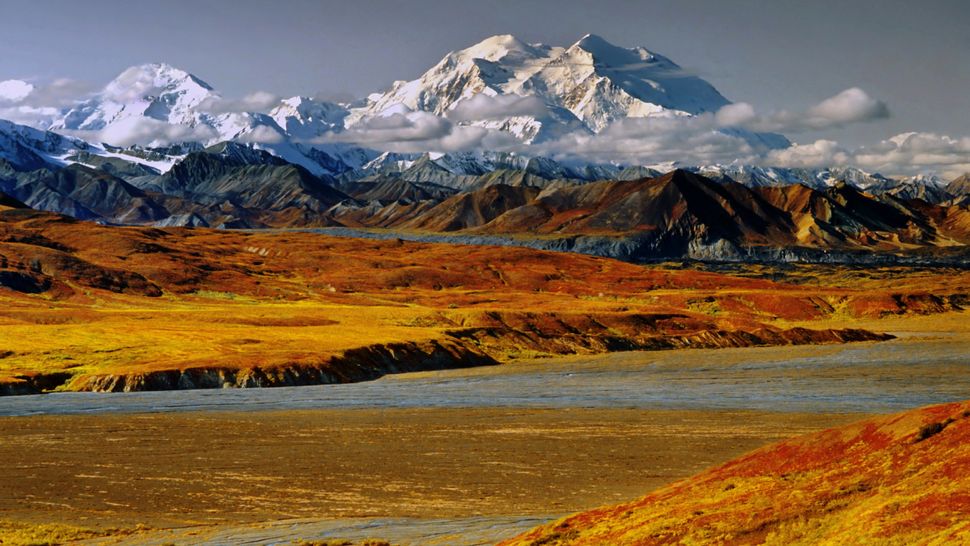Scientists may have accidentally found mystery magma reservoir in volcanoless region of Alaska
By Kiley Price
published 2 days ago

Autumn colors paint the landscape below the mighty Mount McKinley (Denali).
Magma may have been discovered in a volcano-ness region known as the Denali volcanic gap. (Image credit: Carlos Rojas/Getty Images)
Scientists may have accidentally discovered magma bubbling beneath a volcanoless region of Alaska.
Many geologists have long thought that the highest peak in North America, Denali (formerly known as Mount McKinley), should be a volcano, because it's positioned just 60 miles (100 kilometers) above one of the most active fault zones in the U.S. Yet, despite being bordered by volcanoes to its east and west, this area has not shown the telltale signs of molten rock or hot springs at its surface. This prompted a nickname for the region: the Denali volcanic gap.
However, a team studying seismic activity in the area recently uncovered evidence of a magma reservoir about 7 miles (11 km) beneath the surface, according to a study published in December 2023 in the Journal of Geophysical Research: Solid Earth.
"Denali is situated above a downgoing subducting plate, and in most tectonic settings on Earth like this, you have volcanoes at the surface, such as Chile, Mexico, Pacific Northwest, and most of the Aleutians," study author Carl Tape, a professor of geophysics at the University of Alaska Fairbanks, told Live Science in an email. "We were surprised, though not shocked" to find evidence of the magma, he said.
More:
https://www.livescience.com/planet-earth/volcanos/scientists-may-have-accidentally-found-mystery-magma-reservoir-in-volcanoless-region-of-alaska
